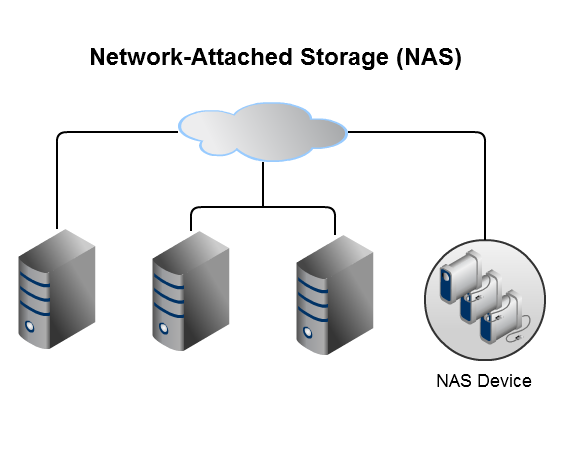Why Scalable NAS Architecture Is Becoming the Backbone of Enterprise Data Growth in 2025

The rapid expansion of unstructured data—from cloud apps to video surveillance to remote-work file systems—has positioned network attached storage manufacturers as key players in the global digital ecosystem. As organizations continue shifting workloads toward hybrid and multi-cloud environments, scalable NAS architecture is quickly becoming the backbone of data operations. In 2025, NAS solutions are emerging as a central component of enterprise resiliency, enabling businesses to seamlessly store, manage, and retrieve massive data sets with stronger data governance capabilities. From SMBs to large multinationals, the demand for flexible, expandable, and high-performance NAS systems is rising sharply as businesses migrate toward connected digital-first business models.
Network Attached Storage Market Size was estimated at 44.17 USD Billion in 2024. The Network Attached Storage industry is projected to grow from 47.72 USD Billion in 2025 to 103.4 USD Billion by 2035, exhibiting a compound annual growth rate (CAGR) of 8.04% during the forecast period 2025–2035. This explosive growth reflects the surging requirement for large-scale file storage and lightning-fast access speeds needed in industries such as media & entertainment, healthcare, BFSI, government, and manufacturing. With organizations generating petabytes of data each day, scalable NAS platforms allow IT departments to expand storage without disruptive infrastructure changes or complex reconfigurations. As a result, businesses are increasingly adopting NAS to enhance continuity, accelerate workloads, and optimize TCO over traditional legacy storage.
The rise of AI and machine learning is also intensifying NAS adoption. Intelligent NAS systems with built-in automation can now classify data, balance performance loads, and optimize storage tiers in real time. These capabilities are especially crucial in enterprise environments where high-volume file data—such as 4K/8K videos, large datasets, design files, and application logs—must be accessed instantly. With modern NAS featuring SSD caching, NVMe pooling, GPU support, and unified file-sharing interfaces, enterprises are accelerating data-access times and building infrastructure compatible with future AI-driven workloads. This shift reflects a broader industry move toward storage intelligence and data-centric architecture.
Regionally, North America continues to lead the NAS transformation, driven by large tech enterprises, cloud-native companies, and strong IT spending. U.S.-based businesses are accelerating hybrid architecture adoption, creating strong demand for enterprise-grade NAS systems with end-to-end encryption, multi-site synchronization, and high-availability clustering. Europe follows closely, driven by compliance-heavy industries such as healthcare and financial services, especially in Germany, the UK, France, and the Netherlands. Meanwhile, Asia-Pacific shows the fastest growth rate, fueled by massive digitalization in India, China, Japan, and South Korea. APAC enterprises are adopting NAS to serve high-density data workloads in sectors like e-commerce, electronics manufacturing, and telecommunications. The Middle East, Latin America, and Africa are also expanding their NAS footprints due to rising investments in cloud data centers, government digitalization programs, and smart city initiatives.
Scalable NAS architecture is also powering modern remote-work operations. With globally distributed teams in need of centralized access to shared files, NAS enables faster file retrieval, smoother collaboration, and secure data access from any location. Enterprises are integrating NAS systems with cloud platforms like AWS, Azure, and Google Cloud to build hybrid storage models that combine local performance with cloud-scale backup. This approach delivers unmatched flexibility, allowing organizations to keep mission-critical files on-premises while leveraging cloud environments for long-term archival storage, instant replication, and disaster recovery. The result is a resilient infrastructure capable of supporting the unpredictable data surges of modern workflows.
Looking ahead, NAS architecture will play a pivotal role in building AI-ready enterprises. As companies modernize workloads, NAS systems will evolve into autonomous data hubs capable of self-healing, dynamic capacity management, and automated data-tiering. With 5G deployment, edge computing, and massively distributed architectures becoming mainstream, NAS will help businesses manage data closer to the source. The future NAS ecosystem will combine scalability, intelligent analytics, and hybrid cloud adaptability—delivering the performance enterprises need to stay competitive in the next decade of digital expansion.
Top Trend Reports:
generative ai market size 2030
- Art
- Causes
- Crafts
- Dance
- Drinks
- Film
- Fitness
- Food
- Games
- Gardening
- Health
- Home
- Literature
- Music
- Networking
- Other
- Party
- Religion
- Shopping
- Sports
- Theater
- Wellness


